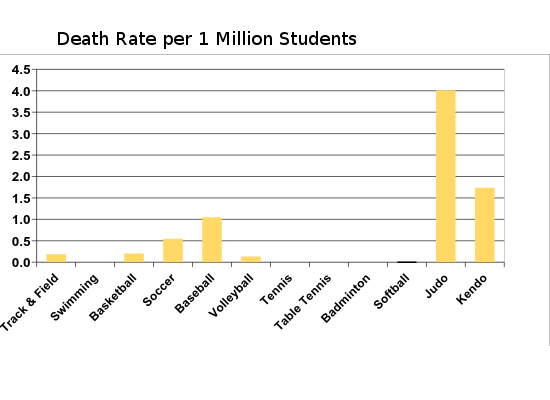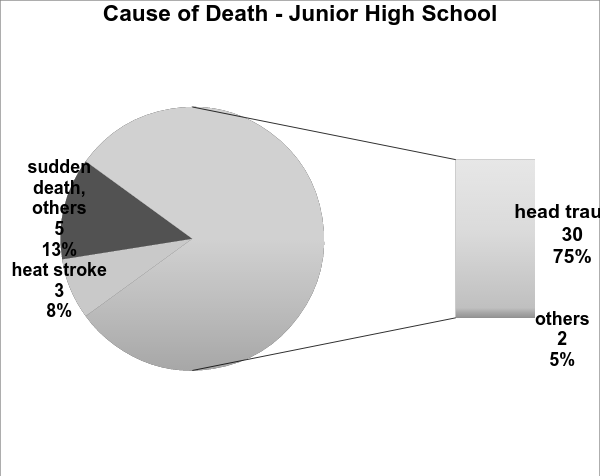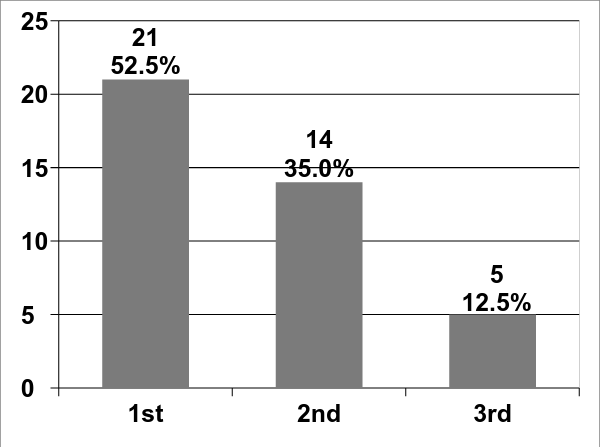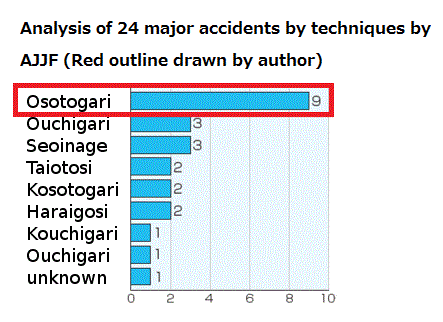119th victim: a fatal judo accident at a junior high school in Fukuoka
119th victim: a fatal judo accident at a junior high school in Fukuoka
A typical case, requiring thorough investigation of instructional methods
Ryo Uchida, Associate Professor, Nagoya University, Graduate School of Education and Human Development
May 29, 2015
■School judo, 119th victim
During an after-school judo club practice at a public junior high school in Fukuoka city, a first grade female student hit the back of her head when her opponent, a second grade female student, used Osotogari. The accident occurred on May 22 and the first grade student died on May 27.
She is the 119th victim in school judo since 1983.
Judo has the highest death rate compared to other school sport club activities. However, in the three years between 2012 and 2014, there were no fatal judo accidents in schools as a result of increased awareness and the efforts of the All Japan Judo Federation. Therefore, the incident in Fukuoka was quite a shock to people in the judo community, including myself.
■A typical example of judo accidents: Head trauma of first grade students
A greater shock to this case was that it was a typical example of a fatal accident in sports. Warnings issued by the All Japan Judo Federation over the past few years have turned into a reality.
Based on my analysis of the 118 fatal judo accidents, two important findings have been derived: (1) accidents have frequently involved first grade students (beginners) of junior high and high schools and (2) the main cause of death was head trauma resulting from opponents’ use of judo techniques.
A warning issued by the All Japan Judo Federation (AJJF) on the first page of Safe Instruction of Judo (Ver 3 2011) states that “The amount of accidents of young beginners who injure their head or neck is substantial.”
The accident in Fukuoka (1) involved a beginner student (2) who died of head trauma resulting from a throw technique implemented by the opponent. It is the same as incidents that have occurred repeatedly before.
■May to July, Osotogari
In Safe Instruction of Judo (Ver 3 2011) by the All Japan Judo Federation, 86 major accidents since 2003 are analyzed independently by the AJJF, and important findings related to this accident are discussed. Two of these important findings will be described briefly.
The first is in regards to technique. According to the AJJF’s analysis, serious accidents have frequently occurred with the use of Osotogari, a move in which the opponent will fall backward and hit their head directly on the mat. In the Fukuoka case, Osotogari was executed from behind and critically injured the victim. People who are familiar with judo accidents must have thought “not again”.
The second finding is about timing. Accidents are concentrated during the months of
May to August. The Safe Instruction of Judo video by the AJJF indicates that “Harsh
training of beginners who have joined the club in April and limited practice of Ukemi
(break-fall) may have resulted in this.” The 15 year old victim who joined the club shortly
before the accident had no previous experience with judo.
■Step-by-step instructions in accordance with the ability and physical strength of
beginners
Press reports have stated that “the City Board of Education acknowledged that ‘there was no problem with teaching methods’”. If this were true, this seems to be too simple of a conclusion. As the data we have seen indicates, protection of judo beginners from head trauma is an important responsibility of judo instructors. Beginners need gradual and careful instruction in accordance with their technical abilities and physical strength.
Had the victim who died learned adequate Ukemi techniques to deal with Osotogari?
What was the gap of judo capabilities and physical strength between the victim and her opponent, a second grade student? To what extent had the instructors considered safety regarding these points? If they had merely “observed” the students in action, then this would not be an example of safe instruction. Content of teaching must to be carefully examined.
■Was the head injury repeated?
Lastly I wish to touch upon a point discussed in the Asahi Shinbun. This national newspaper said that “The victim seems to have complained of a headache before the accident.” If she had, the instructor should have been more responsible. In today’s sports science, an athlete who shows signs of a concussion (headache, dizziness, nausea etc.) should not be allowed to return to the game. They risk further brain trauma, including concussion, which could result in a fatality.
The Fukuoka City Board of Education must collect information quickly and examine facts with a neutral position. If what really happened in the accident is left unsolved, further cases will continue to occur. We do not want to count another fatal accident in the future.
Note: The full picture of judo accident issues, including the death of 118 students under school supervision, can be found in Judo Jiko by Ryo Uchida.














